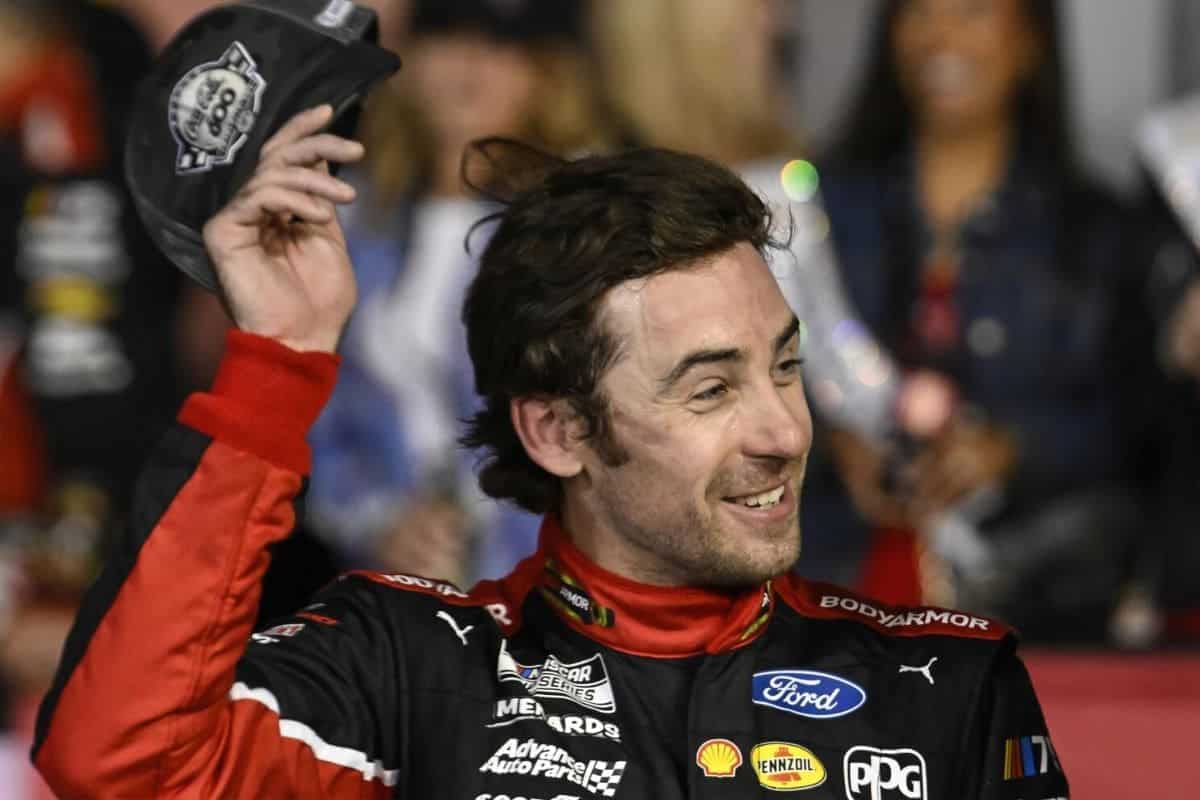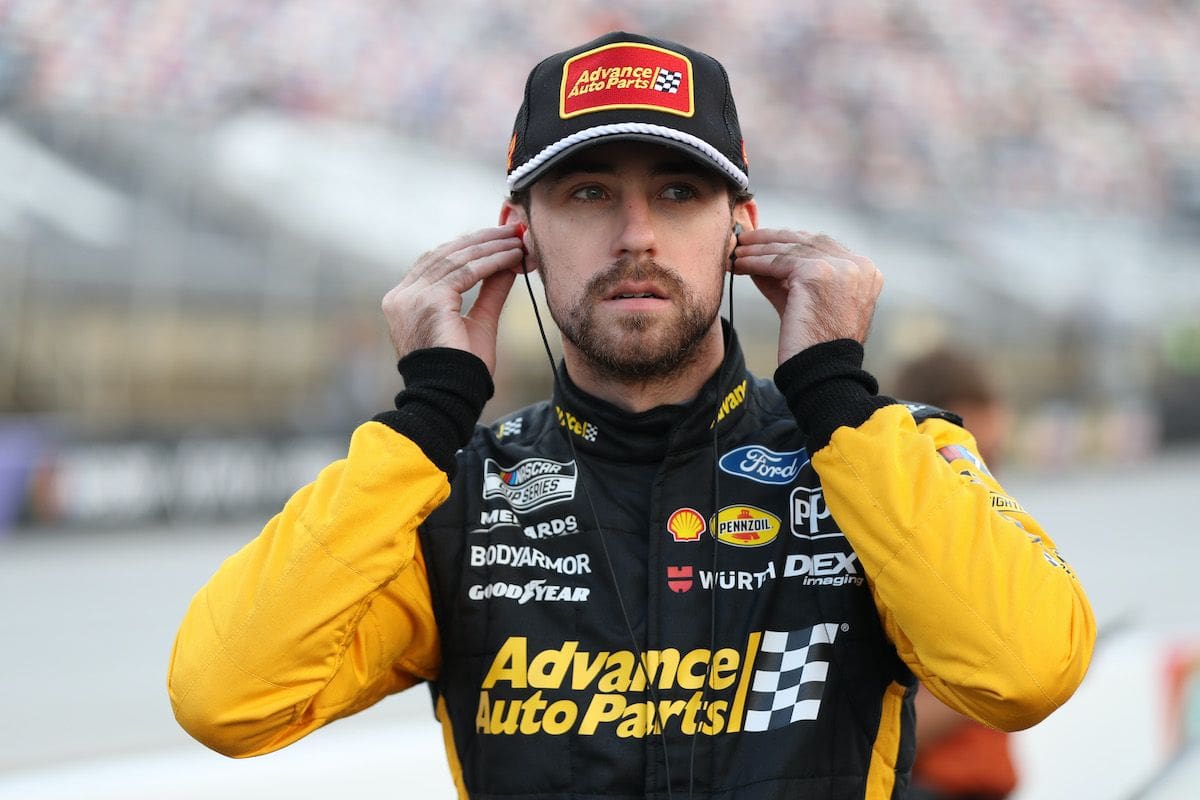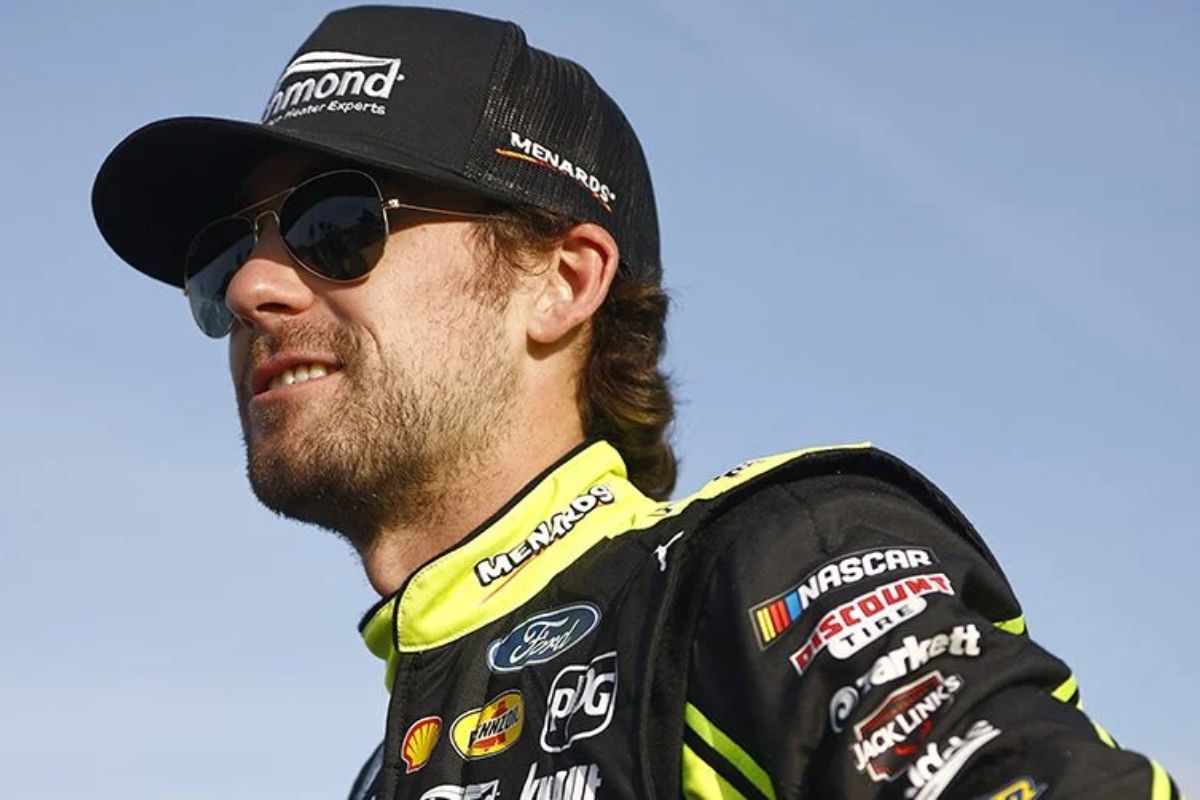Ryan Blaney Questions NASCAR’s Strategy: Ryan Blaney‘s recent comments on NASCAR’s strategy following the Iowa Speedway repave have sparked a critical dialogue within the racing community. The unexpected challenges introduced by the new surface, including inconsistent grip levels and unpredictable tire wear, have raised valid concerns about the general impact on race dynamics. Blaney’s skepticism highlights the broader issue of how track modifications can drastically alter competitive balance and race quality. With veteran driver Brad Keselowski expressing cautious optimism, the contrasting viewpoints among drivers necessitate a deeper examination of NASCAR’s decision-making process and its long-term implications for the sport.
Key Takeaways
- Ryan Blaney expressed concerns about grip levels and tire wear inconsistencies on the repaved Iowa Speedway track.
- Blaney questioned how the new surface would impact the fairness and safety of the races.
- He highlighted the potential for uneven tire wear to disrupt race strategies and driver performance.
- Blaney’s skepticism reflects broader uncertainty among drivers regarding the repave’s impact on race dynamics.
- The selective nature of the repave at Iowa Speedway has sparked debate about its effect on race quality and competitiveness.
Introduction to Iowa Speedway’s Repave
The recent repaving of Iowa Speedway, a significant and unprecedented update since its 2006 opening, aims to improve the racing conditions for the NASCAR Cup Series’ inaugural event at the track. This strategic move by NASCAR is designed to guarantee that the track meets the high-performance standards expected by teams, drivers, and fans alike.
The mile-and-a-half racetrack, known for its unique blend of speed and technicality, has long been a favorite among racing enthusiasts, but the original surface had begun to show signs of wear, necessitating an overhaul.
The repaving process involved planning and execution, using the latest advancements in track surface technology. Engineers and contractors worked diligently to ensure that the new asphalt would provide peak grip and durability, vital factors for maintaining competitive racing conditions. The updated surface is expected to boost tire performance and reduce the risk of wear-related incidents, thereby fostering a safer and more exhilarating racing environment.
Moreover, the repave is anticipated to impact the racing dynamics significantly. A fresh surface typically levels the playing field, as teams must adapt to the new conditions with limited historical data. This scenario could lead to unexpected performances and strategic innovations, adding an element of unpredictability to the event.
As the NASCAR Cup Series prepares for its debut at Iowa Speedway, the repave stands as a confirmation of NASCAR’s commitment to evolving and improving the sport. It underscores the importance of maintaining high-quality racing venues and enriching the spectator experience. This investment in track infrastructure signals a forward-looking approach, aiming to preserve the integrity and excitement of NASCAR racing for years to come.

Concerns Surrounding the Repave
Concerns have emerged regarding the recent repave of Iowa Speedway, with prominent drivers like Kyle Larson and Christopher Bell expressing apprehensions about its potential impact on the upcoming NASCAR Cup race. Both Larson and Bell participated in the Goodyear tire test and provided critical insights that have fueled the ongoing debate. Their detailed observations suggest that the repave might not yield the desired improvements, potentially affecting tire performance and race dynamics.
Images of the newly repaved track have circulated widely, raising eyebrows among the racing community. The visual evidence alone has led to skepticism about the quality and readiness of the surface. Larson emphasized that the repave could lead to unforeseen complications, noting that the grip levels and tire wear during testing were inconsistent. Bell echoed similar sentiments, highlighting the importance of a stable and predictable racing surface for driver safety and competitive fairness.
Ryan Blaney, known for his candidness, added a touch of levity to the discourse with his humorous critique, yet his underlying concern was evident. Blaney’s remarks underscore a broader unease within the driver fraternity about the potential pitfalls of the repaving effort. His sustained skepticism suggests that drivers are not merely reacting to aesthetic details but are genuinely worried about the practical implications for race day.
The consensus among these elite drivers points to a need for NASCAR to address these issues promptly. Their expert opinions cast a spotlight on the critical balance between maintaining track integrity and ensuring a competitive yet safe racing environment. As the race date approaches, all eyes will be on how NASCAR responds to these valid concerns and whether any adjustments will be made to mitigate potential risks.
Impact of Repaves on Racing
Repaving efforts at racetracks often lead to significant changes in race dynamics, directly influencing tire performance, grip levels, and general competitiveness. The recent repave at Iowa Speedway has sparked considerable debate in the NASCAR community, primarily due to its unconventional approach and the resulting impact on race quality.
Repaves typically result in a smoother racing surface, which, while beneficial for car longevity, tends to create a single-groove racing condition. This fundamentally alters the details of race strategy, as drivers find fewer opportunities to pass, leading to a procession-like race rather than the competitive spectacle fans and drivers anticipate. The reduced tire wear further compounds this issue, as the strategic element of tire management becomes less critical, diminishing the variability in race outcomes.
The selective nature of the Iowa Speedway repave—focusing only on the corners and the inside lane—introduces a unique set of challenges. This partial resurfacing raises questions about track consistency and its effect on the overall race dynamics. Drivers accustomed to the previous conditions might find the new configuration disrupts their usual approaches to cornering and lane selection, potentially leading to an initial period of adjustment and unpredictability in race outcomes.
Moreover, the altered grip levels on the repaved sections compared to untouched parts of the track can lead to uneven tire wear and unpredictable handling characteristics. This inconsistency can disrupt the rhythm of the race, making it harder for drivers to maintain peak performance throughout the event.

Driver Reactions to the Repave
Many drivers have expressed a range of reactions to the Iowa Speedway repave, highlighting both excitement and apprehension about the impact on race dynamics. Ryan Blaney, who holds a special connection to the track, has been vocal about his mixed feelings. Blaney reminisced about his successes at Iowa, including his initial truck win over a decade ago and his 2015 Xfinity Series victory. While he appreciates the venue’s sentimental value and the decision to host a Cup race there, he voiced curiosity and skepticism regarding the rationale behind the repave.
“I like a Cup race is going there; that’s a great venue. My mother’s from just outside Des Moines, so I have a lot of family up there too. So, special track for me, I got my first truck win there over 10 years ago. The repave job is interesting; I’d like to know the mindset behind that, but I’m still going to enjoy going there”-(ryan)
Blaney’s sentiments are echoed by other drivers who have weighed in on the new racing surface. The general consensus among the racing community is a blend of anticipation and caution. The repave promises a smooth, pristine track that could potentially enhance the racing experience. However, it also introduces uncertainties about tire wear, grip levels, and overall race strategies. These factors are critical in shaping race outcomes and driver performance.
Some drivers, like Kevin Harvick, have noted that repaves can often lead to a single-groove track, which might hinder overtaking opportunities and reduce the overall excitement of the race.
Conversely, younger drivers, who thrive on adaptability, see the repave as an opportunity to challenge the status quo and showcase their skills on a renewed surface.
Optimism from Veteran Driver Brad Keselowski
Amid the mixed reactions from drivers regarding the Iowa Speedway repave, veteran driver Brad Keselowski has emerged as a notable voice of optimism, emphasizing the safety and performance benefits of the new surface. Keselowski’s feedback underscores the necessity of the repave, particularly in view of the advanced design of the Next-Gen race cars, which feature aerodynamic bodies and underwings that ride mere inches above the track.
The recent repave has successfully eliminated the notorious bumps that previously characterized the Iowa Speedway, specifically a severe tunnel bump in the turns. Keselowski, who participated in the Goodyear tire testing at the newly surfaced track, highlighted the significance of these changes. ‘A lot changed with the track surface. It used to have this really wicked tunnel bump down in the turns, and now that’s kind of taken care of which is nice. Because the Next-Gen car doesn’t really play well with bumps, kind of like an IndyCar. But I think it’ll make the car more race-able,’ he stated.
From a safety perspective, the new surface is set to reduce the risk of damage to the Next-Gen cars and reduce the likelihood of driver injuries. The smoother track is not only expected to improve the longevity of the cars but also enhance the racing experience. While an older, more worn-out surface can provide thrilling racing dynamics, the repave was deemed vital after eighteen years without modifications, ensuring that the track meets contemporary safety standards.
UDPB: Brad @Keselowski has always been a fan of @iowaspeedway.
Here are his thoughts after getting on-track in a Cup Series car Tuesday during the Goodyear tire test. pic.twitter.com/HyquQQ5mnp
— Always Race Day (@AlwaysRaceDay) May 29, 2024
Keselowski’s optimistic view provides a counterbalance to the skepticism expressed by some of his peers, suggesting that the repave could ultimately foster a safer, more competitive racing environment.

News in Brief: Ryan Blaney Questions NASCAR’s Strategy
The events at Iowa Speedway following its repave have prompted critical examination of NASCAR’s strategic decisions. The concerns raised, especially by Ryan Blaney, highlight the complexities and unforeseen challenges associated with altering track surfaces, particularly regarding grip levels and tire wear.
Evaluating the implications of these changes on race quality and competitiveness is crucial. The situation underscores the necessity for NASCAR to refine its approach to track repaving to maintain racing integrity and driver safety.
Also Read: Ryan Blaney Quest For Redemption at WWT Raceway NASCAR
